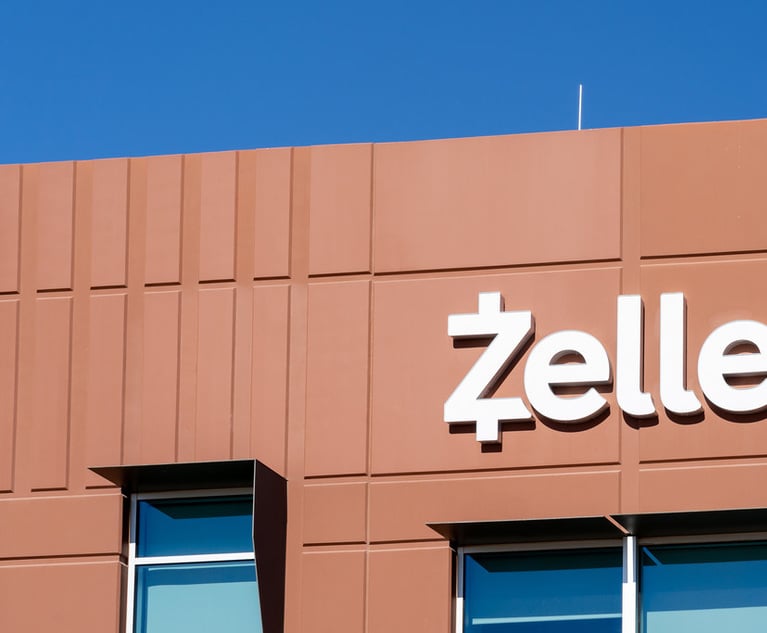Discovery Trailblazers
Companies create new positions to deal with e-discovery dilemmas.
July 31, 2006 at 08:00 PM
7 minute read
Pfizer was struggling under the weight of a heavy litigation workload in 2003. It was spending millions of dollars to have outside counsel and software vendors handle its considerable e-discovery workload. The pharmaceutical company was in desperate need of someone who could help manage the e-discovery process from the inside. Kevin Esposito fit the bill.
Pfizer promoted Esposito, formerly the company's IT manager, to a newly created position–director of e-discovery. The move made perfect sense. Esposito had spent the early part of his career in IT at UPS helping lawyers understand the technology behind digital signatures. He also had a law degree and served as UPS' IT attorney.
Esposito's new job was to manage the physical collection of data, whether for a legal proceeding or a government inquiry; work with outside processing houses to search and cull the data; and manage vendor selection and engagement. In short, Esposito bridges the gap between IT and legal during the e-discovery process.
“You have to understand that IT people are scared silly of lawyers, and lawyers are scared silly of IT people,” Esposito says.
Pfizer isn't the only company to have seen the advantages in having an e-discovery manager. Companies such as Verizon and Cendant Corp., a provider of travel and real-estate services, have created similar positions. And experts predict that even more companies will go this route.
“Virtually every company in the Fortune 50 is trying to find someone to manage e-discovery,” says Kirke Snyder, a director in the e-discovery practice at LECG, a legal consultancy.
In-House Advantage
There are a number of reasons why companies such as Pfizer are turning to e-discovery managers.
The first is to reduce the costs. Outside e-discovery vendors charge roughly 12 cents per page to process e-discovery data. This might not sound like a lot, but considering that some projects require the processing of a terabyte of data–the equivalent of 50,000 trees worth of paper–some projects cost hundreds of thousands of dollars. In addition, hiring outside counsel to review electronic documents can be an enormous expense.
One way to minimize these costs is by managing vendor selection. Most companies allow outside counsel to contract e-discovery vendors directly for their projects, which means the company has very little control over what it pays for each service. An e-discovery manager works directly with vendors, ensuring that the company gets the best possible rates.
“If you rely on outside counsel you are toast,” says Rick Wolf, who leads Cendant's e-discovery team as the company's corporate compliance officer. “When dealing with vendors, you don't want to be ripped off not knowing what they are talking about. That's why it's important to have someone in-house manage e-discovery.”
It's also important to have someone bridge the communication barriers between legal and IT. Without a translator in place, e-discovery can go painfully wrong.
In 1999, for example, the DOJ sued Philip Morris, alleging the company misled the public about tobacco health risks. The DOJ requested that Philip Morris place a hold on its data destruction policy, which at the time automatically deleted e-mails after 60 days. Not understanding the legal and financial consequences of failing to preserve e-mails, the company's IT division allowed the automatic deletion process to continue for another two months. This communication breakdown between IT and legal resulted in a $2.75 million sanction against the company.
In turn, problems can result when legal doesn't understand IT. In the 2005 age-discrimination case Williams v. Sprint/United Mgmt. Co., the court ordered the defense to produce approximately 3,000 spreadsheets. When processing the documents, the defendants' lawyers removed metadata from them. As a result, the court ordered the defendants to shoulder the cost of producing the spreadsheets again with metadata left intact.
“Lawyers throw around terms like metadata without knowing what they mean,” Esposito says. “Having someone who has the IT knowledge to backup the legal team enables your organization to relax a bit.”
Advance Preparation
E-discovery managers also enable the organizations to relax by proactively preparing for litigation. Litigation readiness is important for two reasons. One, a screw up in e-discovery, such as removing metadata during document production, can result in sanctions or a court issued adverse inference. Two, creating a consistent process for every e-discovery project–which always includes data collection, processing and review–will shorten the time it takes to complete each project, thereby reducing outside counsel costs.
“Corporations are continuously reacting to information requests, and thus continuously spending,” says David Baskin, director of discovery management strategy at Zantaz, an e-discovery solutions provider. “A practical approach would be to start the process before the request by mapping where the data are, figuring out how to access it and putting controls on the process to get consistency.”
To do this, the e-discovery manager must not only know the company's legal issues, but also its IT infrastructure. Oftentimes this means the best candidates for e-discovery managers are attorneys who have gained IT knowledge through their work. For example, when Cendant needed someone to lead its e-discovery team it turned to Liz Gehringer, who worked as a compliance and risk management lawyer for the company. In that role she had handled a lot of e-discovery and IT issues.
“Corporations need to start recognizing that e-discovery is a hybrid corporate function,” Wolf says. “It looks legal, but it isn't just legal. It's not IT, but it has a lot of IT in it.”
Experts agree that regardless of whether candidates come from a legal or an IT background, the most important quality is their ability to manage projects by implementing processes, such as uniform data retention, collection and processing policies.
Cost Control
For many companies, though, an e-discovery manager is a luxury they can't afford. A company can expect to pay such a person between $100,000 and $300,000 a year.
“E-discovery managers aren't going to come cheap,” says James McKenna, firm-wide litigation technology manager at Morrison & Foerster. “The basis for the cost is that there are so many dollars associated with any litigation these days that it would pay very quickly for itself.”
But such a position only pays for itself if a company has a large docket of document-intensive litigation.
“If a corporation is not a serial litigant, meaning they only get a couple of requests a year, there might not be a need for an e-discovery manager,” Baskin says.
However, experts agree that with the burdens of e-discovery increasing for small and large organizations, more companies will begin staffing e-discovery managers within the next two years.
But for now, those like Esposito are the trailblazers in this new in-house position, providing companies with an efficient solution to e-discovery's problems.
“I'm told right now I'm one of the few people who has both the IT background and the legal background, too,” Esposito says. “Companies are going to have a tough time finding someone who can translate from one group to the other.”
This content has been archived. It is available through our partners, LexisNexis® and Bloomberg Law.
To view this content, please continue to their sites.
Not a Lexis Subscriber?
Subscribe Now
Not a Bloomberg Law Subscriber?
Subscribe Now
NOT FOR REPRINT
© 2024 ALM Global, LLC, All Rights Reserved. Request academic re-use from www.copyright.com. All other uses, submit a request to [email protected]. For more information visit Asset & Logo Licensing.
You Might Like
View All

Coinbase Hit With Antitrust Suit That Seeks to Change How Crypto Exchanges Operate
3 minute read
Baker Botts' Biopharma Client Sues Former In-House Attorney, Others Alleging Extortion Scheme
Trending Stories
- 1'Largest Retail Data Breach in History'? Hot Topic and Affiliated Brands Sued for Alleged Failure to Prevent Data Breach Linked to Snowflake Software
- 2Former President of New York State Bar, and the New York Bar Foundation, Dies As He Entered 70th Year as Attorney
- 3Legal Advocates in Uproar Upon Release of Footage Showing CO's Beat Black Inmate Before His Death
- 4Longtime Baker & Hostetler Partner, Former White House Counsel David Rivkin Dies at 68
- 5Court System Seeks Public Comment on E-Filing for Annual Report
Who Got The Work
Michael G. Bongiorno, Andrew Scott Dulberg and Elizabeth E. Driscoll from Wilmer Cutler Pickering Hale and Dorr have stepped in to represent Symbotic Inc., an A.I.-enabled technology platform that focuses on increasing supply chain efficiency, and other defendants in a pending shareholder derivative lawsuit. The case, filed Oct. 2 in Massachusetts District Court by the Brown Law Firm on behalf of Stephen Austen, accuses certain officers and directors of misleading investors in regard to Symbotic's potential for margin growth by failing to disclose that the company was not equipped to timely deploy its systems or manage expenses through project delays. The case, assigned to U.S. District Judge Nathaniel M. Gorton, is 1:24-cv-12522, Austen v. Cohen et al.
Who Got The Work
Edmund Polubinski and Marie Killmond of Davis Polk & Wardwell have entered appearances for data platform software development company MongoDB and other defendants in a pending shareholder derivative lawsuit. The action, filed Oct. 7 in New York Southern District Court by the Brown Law Firm, accuses the company's directors and/or officers of falsely expressing confidence in the company’s restructuring of its sales incentive plan and downplaying the severity of decreases in its upfront commitments. The case is 1:24-cv-07594, Roy v. Ittycheria et al.
Who Got The Work
Amy O. Bruchs and Kurt F. Ellison of Michael Best & Friedrich have entered appearances for Epic Systems Corp. in a pending employment discrimination lawsuit. The suit was filed Sept. 7 in Wisconsin Western District Court by Levine Eisberner LLC and Siri & Glimstad on behalf of a project manager who claims that he was wrongfully terminated after applying for a religious exemption to the defendant's COVID-19 vaccine mandate. The case, assigned to U.S. Magistrate Judge Anita Marie Boor, is 3:24-cv-00630, Secker, Nathan v. Epic Systems Corporation.
Who Got The Work
David X. Sullivan, Thomas J. Finn and Gregory A. Hall from McCarter & English have entered appearances for Sunrun Installation Services in a pending civil rights lawsuit. The complaint was filed Sept. 4 in Connecticut District Court by attorney Robert M. Berke on behalf of former employee George Edward Steins, who was arrested and charged with employing an unregistered home improvement salesperson. The complaint alleges that had Sunrun informed the Connecticut Department of Consumer Protection that the plaintiff's employment had ended in 2017 and that he no longer held Sunrun's home improvement contractor license, he would not have been hit with charges, which were dismissed in May 2024. The case, assigned to U.S. District Judge Jeffrey A. Meyer, is 3:24-cv-01423, Steins v. Sunrun, Inc. et al.
Who Got The Work
Greenberg Traurig shareholder Joshua L. Raskin has entered an appearance for boohoo.com UK Ltd. in a pending patent infringement lawsuit. The suit, filed Sept. 3 in Texas Eastern District Court by Rozier Hardt McDonough on behalf of Alto Dynamics, asserts five patents related to an online shopping platform. The case, assigned to U.S. District Judge Rodney Gilstrap, is 2:24-cv-00719, Alto Dynamics, LLC v. boohoo.com UK Limited.
Featured Firms
Law Offices of Gary Martin Hays & Associates, P.C.
(470) 294-1674
Law Offices of Mark E. Salomone
(857) 444-6468
Smith & Hassler
(713) 739-1250







